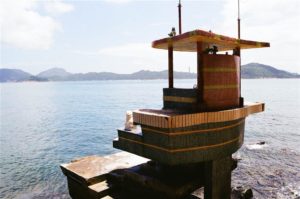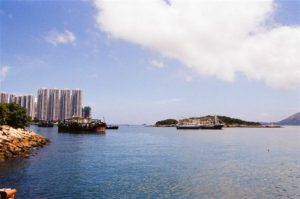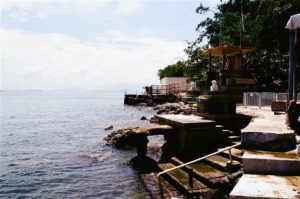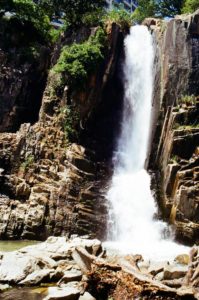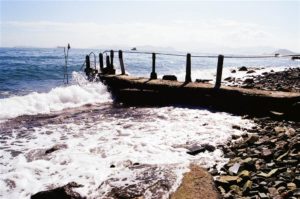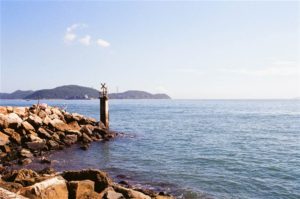The Southern District Coastal Trail (The Waterfall Bay and Sandy Bay Road)
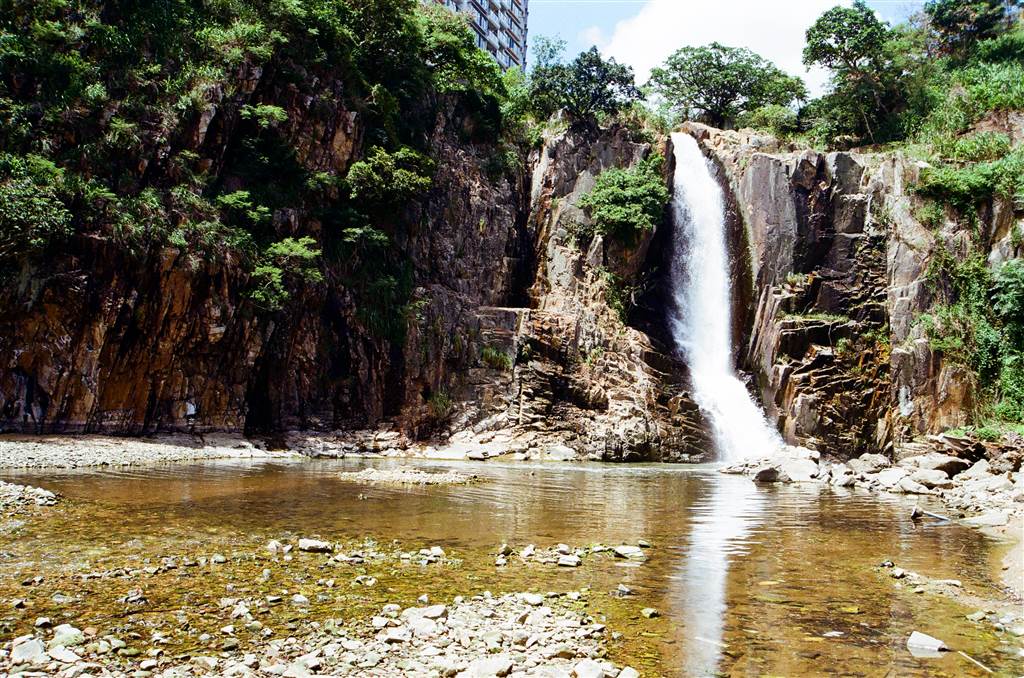
I have been very eager to visit the Waterfall Bay at Wah Fu Estate for a while. After a stretch of rainy days last week, the water flow must be voluminous there. Therefore on the first sunny morning I headed out to the Southern District of Hong Kong Island to finally see this site of significance in Hong Kong’s history.
The plan was to see Sandy Bay Road, which is also part of the Southern District Coastal Trail, then head on over to the Waterfall Bay. However, I learned that there was no bus from where I was, which was some ways from Kennedy Town, to Sandy Bay. I then switched around my itinerary, and decided to go to the Waterfall Bay first. It being located close to Wah Fu Estate, there were many transportation options.
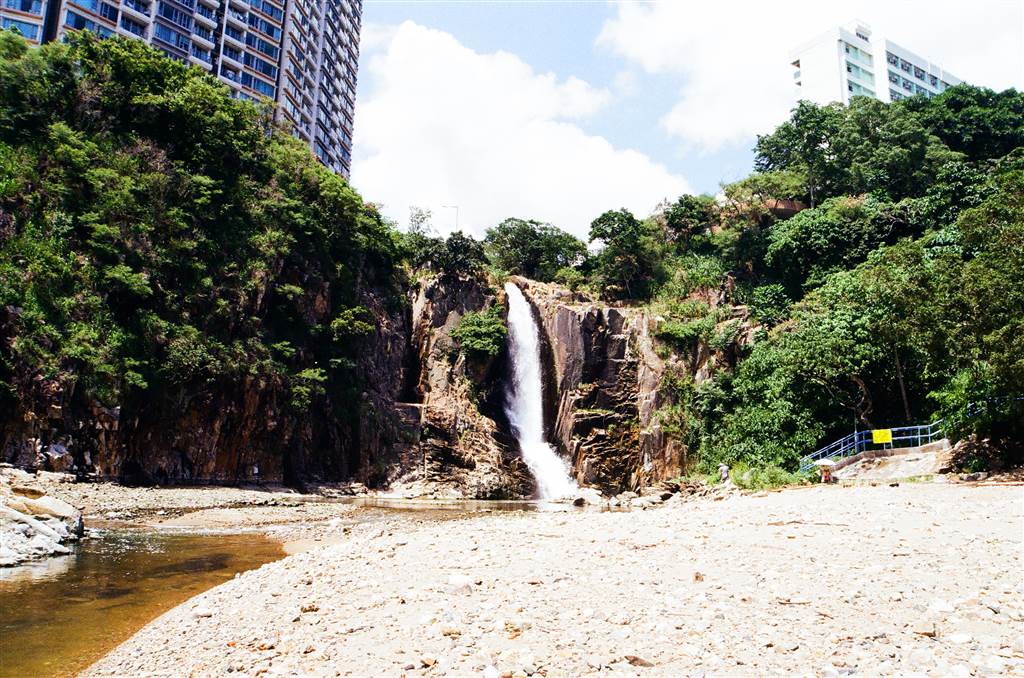
The Waterfall Bay’s History
I arrived at Wah Fu Estate and headed right onto the Waterfall Bay Road. Soon I came upon a park area with recreational facilities, and found my way first to the Buddha Statues and the Wah Fu Estate Swimming Spot. They are right next to each other. To be honest, the Buddha Statues were a little creepy to me. The statues lined a whole section of the slope, giving an impression of an unusual presence of spirits. Some bloggers suggest that the former residents of Wah Fu Estate left their Buddhas behind in this location when they moved away.
At this viewpoint, the Lamma Island seems within reach.

Photos: views at the Wah Fu Estate Swimming Shed
Many incidents in its past suggest the Waterfall Bay to be haunted. The main source of this spookiness was the fact that the Japanese military has used the military structures at Waterfall Bay (see below) during the Japanese Occupation years. They massacred commoners and members of the anti-Japanese guerilla forces here. The site was once a mass grave as a result. As the Wah Fu Estate was itself once a cemetery, this history have inspired countless eerie rumours.
Yet the historical significance of the waterfall at Waterfall Bay goes beyond the World War II era. In a visit to the Hong Kong Museum of Art on a previous occasion, I saw a painting by an unknown artist of the Waterfall Bay. The Museum had this following to say about the waterfall:
“Some scholars believe that it was known as the Waterfall of Aoyang, and was regarded as one of the “Eight Views of Xin’an” mentioned in the Gazetteer of Xin’an County edited by Wang Chongxi in 1819 (the 24th year of the Jiaqing Reign of the Qing Dynasty). Today, there is still a waterfall by the sea at Wah Fu Estate (which was formerly a cemetery named Kai Lung Wan). It was a place where merchant ships or warships entering and leaving Hong Kong stopped to replenish drinking water. In 1816, a British diplomatic mission being sent to the Qing government halted to obtain supplies there. The diplomat praised “A beautiful waterfall plunging through the picturesque scenery,” which was reflected in the designation “Waterfall Bay.”
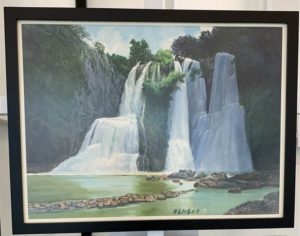
This painting shows the waterfall to be significantly grander than its current views. The upstream of this water flow came from Pok Fu Lam. According to some bloggers, the construction of the Pok Fu Lam Reservoir has cut the water flow there by half.
Along the same lines of haunted rumors, there was a mass murder of villagers here by the pirates that ran rampant during the Qing Dynasty. Plenty of spirits seemed to have met unhappy ends here.
In terms of standard history, the Waterfall Bay is also the location of some military significance. Right at the rocky shore of the waterfall, the ruins of a pillbox and a search light tower stand, lonelily especially at high tide. The Waterfall Bay military structures were part of the British’s plan for Hong Kong Island’s coastal defence during WWII. The light tower was equipped with Lyon Light. However, the site might not have served in any battle. It later became haunted because the Japanese might have used it for gruesome ends during the Japanese Occupation years, as discussed above.

This historic relic is accessible during low tide, which is sometime in the afternoon. I was there at 2pm. The stream was low enough to trek across with shoes off.
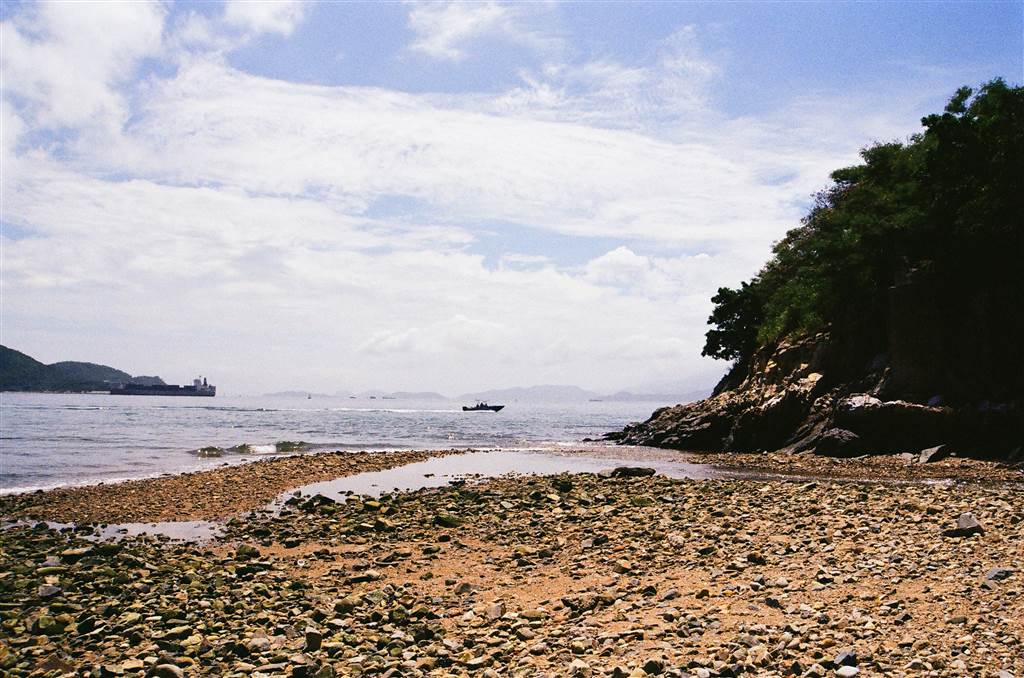
Photo: the rocky shore at the Waterfall Bay at low tide
In all reasonableness, however, there are danger points at this site. It’s haunted also because there were fatal accidents from tourist visits. Therefore exercise caution when you are there.
The Journey
At the Wah Fu Estate part of the Southern District Coastal Trail, I turned left facing the sea. I found my way to the site of Buddha statues and the swimming shed. Having gone back to the park, I headed northward. Soon I reached the stairs down to the Waterfall Bay. The sound of flowing water was the first sensation. The view was breathtaking:
The Waterfall Bay is a very special location because it is a natural wonder at a stone’s throw from civilisation. The Bel-Air behind the waterfall makes a great juxtaposition.
As noted above, in the old days the fresh water supply here was much-needed for both merchant and military ships. Although its supply of fresh water has long ceased to be of practical importance, the waterfall now provides a close encounter with nature and it is therapeutic. I stared at the waterfall for half an hour, breathing in an abundance of negative ions, and simply did not want to leave.
After visiting the Waterfall Bay and the war relic, I took a bus to Cyberport. Then I went on foot for about 15 minutes to see the Sandy Bay. On this stretch of a seaside promenade, the stone barrier is a photogenic feature that many photographers like. Because it faces west, it is also a great spot for watching sunset.
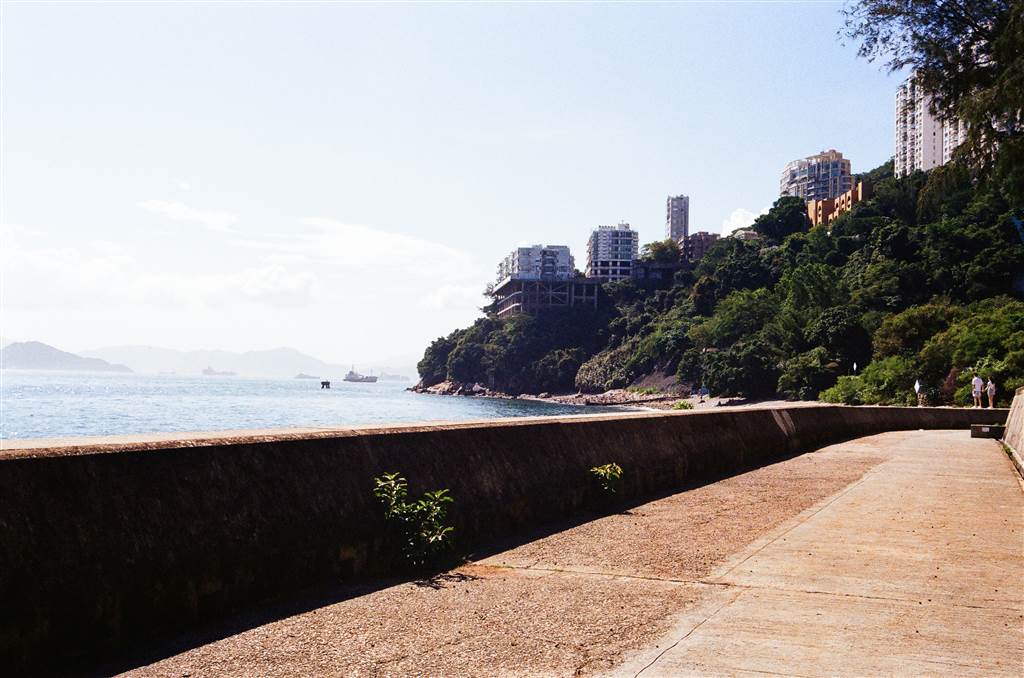
Some older reports discuss a seaside swing hung on tree branches, and also a swimming shed with a stone bridge. The scenery would rival the Sai Wan Swimming Shed. I was keen on seeing Sandy Bay because of these features, but they no longer exist now. Instead, I went further from the stone barrier section of the road, and climbed over the large rocks onto the beach. There is another stone or concrete bridge there that is just as photogenic.
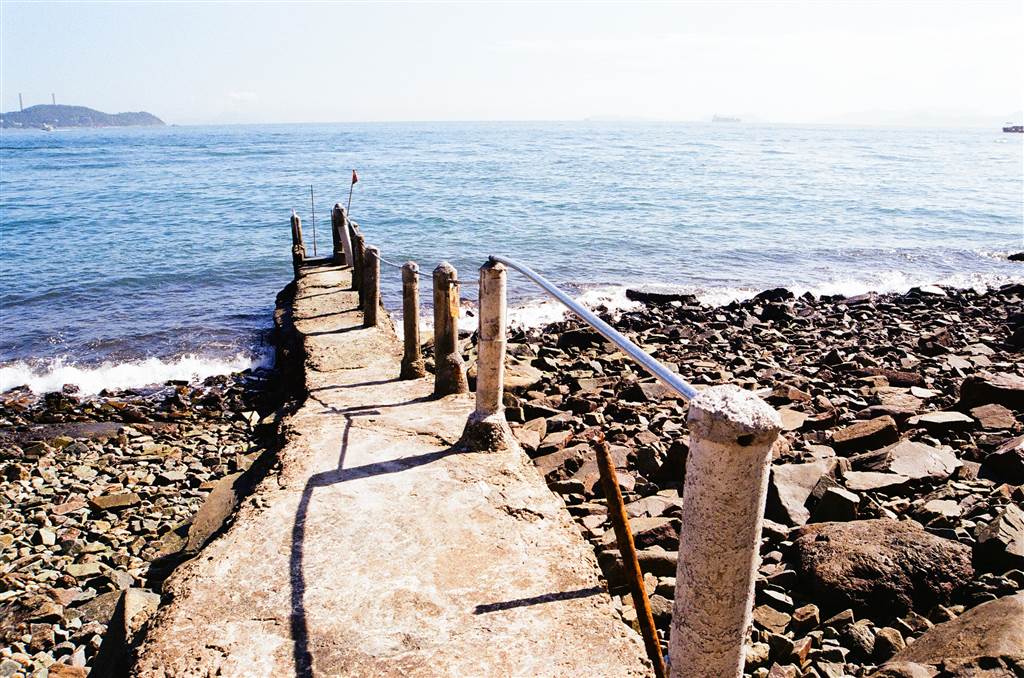
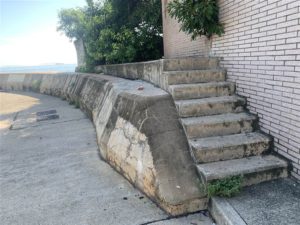
Photos: Above photos are the views at the Sandy Bay shore. Take these stairs at the beginning of Sandy Bay Road. Climb over the large rocks to reach the bridge pictured above.
How to Get There
I took Bus 970 from the Kennedy Town area and got off at the Wah Ching House, Wah Fu Estate stop. Other buses that stop there are 4X, 42, 42C, 94A and A10. Once getting off at this stop, walk downward on Waterfall Bay Road to reach Waterfall Bay Park. At that point facing the sea, you will reach the Buddhas and the Wah Fu Swimming Shed on your left, and the waterfall is on your right, northward.
There are a few minibus routes serving the Cyberport areas as well, including 10, 10P, 58 and 58M, which will stop very close to the Sandy Bay Road entrance. If you go from Cyberport to Sandy Bay Road, get off at the MacLehose Medical Rehabilitation Centre and walk one minute toward the shore to enter Sandy Bay Road. Otherwise, a walk from Cyberport to Sandy Bay Road is about 20 minutes, a part of which is a gentle incline but there is very little shade throughout.
Sources
Exhibition at the Museum of Art of Hong Kong.
The Wikipedia on Waterfall Bay.
Waterfall Bay, A Waterfall within the City.
Waterfall Bay Park, Hidden in the City.
For Further Reading
This is part of a series of writing about World War II History in Hong Kong. Please visit the following links for more on the same subject.
Japanese Fortifications in Luk Keng
Murmurs of the Hollow at Mount Davis
Hike of the Year: From Nam Fung Sun Tsuen to Jardine’s Lookout and Back



